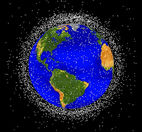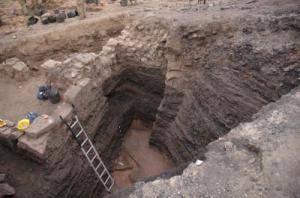Opal, a mineral that needs water to form, is widespread in Martian terrain younger than 2.5 billion years old, new spacecraft observations suggest. The discovery offers the most recent mineralogical evidence yet of liquid water on the planet's surface - and suggests an intriguing new target for future searches for Martian life.

© Viking Project/NASAThe 4000-km-long Valles Marineris is the Red Planet's Grand Canyon. Narrow outcrops of opal are found in and around the canyon. The minerals may be quite extensive – covering regions spanning 1000 km – but are only seen where erosion has cleared away overlying dust and rocks.
Two other types of water-containing, or hydrated, minerals have previously been found on Mars - clays and hydrated sulphates. Since scientists can date the age of a particular terrain by studying the number and sizes of its craters, they found that the two mineral types seem to have originated from different periods in the planet's history.







Comment: "This is the most mindless, ignorant, uninformed comment that we have seen from Governor Palin so far, and there's been a lot of competition for that prize." - Richard Wolfe, Newsweek